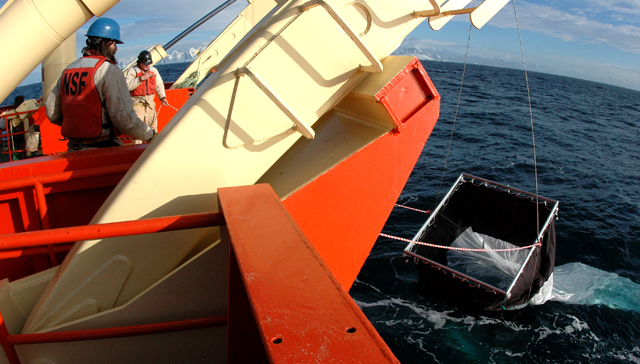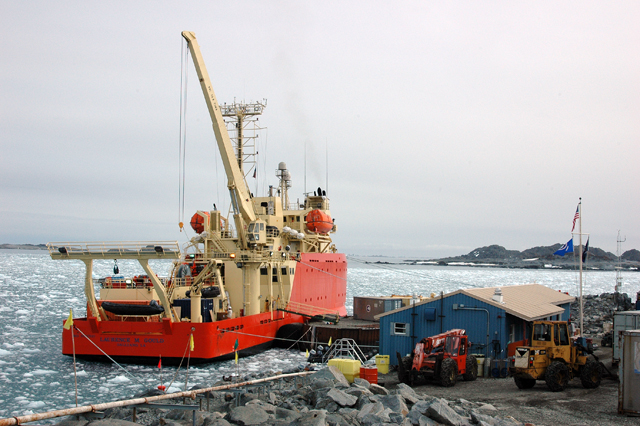Gould charter extendedResearch vessel to continue to support NSF mission for next five yearsPosted March 12, 2010
Cue the William Shatner voice-over: “These are the voyages of the ARSV Laurence M. Gould Well, you get the idea: Raytheon Polar Services Co. (RPSC) RPSC is the prime contractor to the National Science Foundation Built in 1997 by Louisiana-based Edison Chousest, the Gould is a 230-foot-long, ice-strengthened vessel used to support Antarctic research, as well as to transport people and cargo between Punta Arenas, Chile, and Palmer Station Research solicitation Information
Interested principal investigators should submit research proposals to the NSF Office of Polar Programs (OPP) The Gould replaced the RV Polar Duke, which the NSF chartered from 1985-1997. The Gould generally operates year-round out of Punta Arenas, and can accommodate about 26 research scientists for missions up to 75 days long. Each January, the ship embarks on a month-long cruise in support of the Palmer Long Term Ecological Research program Other scientific work recently supported by the Gould includes tagging humpback whales, collecting icefish for various experiments, and deploying field camps for geologic work on several islands around the Antarctic Peninsula. The Gould is named in honor of Laurence McKinley Gould, a polar explorer, geologist, teacher and college president. He was second-in-command during Adm. Richard E. Byrd’s first Antarctic expedition of 1929-1930. An international figure with 25 honorary degrees, Gould died in 1995 at the age of 99, the year that the NSF initiated the charter on the ice-strengthened vessel. |



For USAP Participants |
For The Public |
For Researchers and EducatorsContact UsU.S. National Science FoundationOffice of Polar Programs Geosciences Directorate 2415 Eisenhower Avenue, Suite W7100 Alexandria, VA 22314 Sign up for the NSF Office of Polar Programs newsletter and events. Feedback Form |



